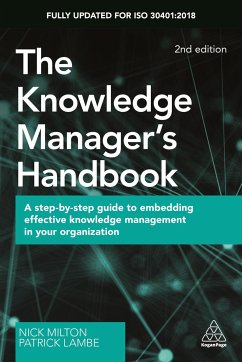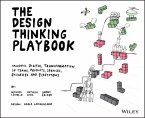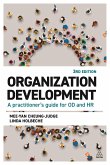Nick Milton, Patrick Lambe
The Knowledge Manager's Handbook
A Step-by-Step Guide to Embedding Effective Knowledge Management in your Organization
Nick Milton, Patrick Lambe
The Knowledge Manager's Handbook
A Step-by-Step Guide to Embedding Effective Knowledge Management in your Organization
- Broschiertes Buch
- Merkliste
- Auf die Merkliste
- Bewerten Bewerten
- Teilen
- Produkt teilen
- Produkterinnerung
- Produkterinnerung
Design and implement a sustainable knowledge management framework with practical guidance from the internationally recognised standard ISO 30401.
Andere Kunden interessierten sich auch für
![Cyber Risk Management Cyber Risk Management]() Christopher J HodsonCyber Risk Management38,99 €
Christopher J HodsonCyber Risk Management38,99 €![The Design Thinking Playbook The Design Thinking Playbook]() Michael LewrickThe Design Thinking Playbook25,99 €
Michael LewrickThe Design Thinking Playbook25,99 €![Metadata Metadata]() Jeffrey PomerantzMetadata12,99 €
Jeffrey PomerantzMetadata12,99 €![Data Governance Data Governance]() John Ladley (Editor of the Data Strat Principal of IMCue SolutionsData Governance63,99 €
John Ladley (Editor of the Data Strat Principal of IMCue SolutionsData Governance63,99 €![Data Strategy Data Strategy]() Bernard MarrData Strategy22,99 €
Bernard MarrData Strategy22,99 €![Organization Development Organization Development]() Mee-Yan Cheung-JudgeOrganization Development35,99 €
Mee-Yan Cheung-JudgeOrganization Development35,99 €![Everybody Lies Everybody Lies]() Seth Stephens-DavidowitzEverybody Lies10,99 €
Seth Stephens-DavidowitzEverybody Lies10,99 €-
-
-
Design and implement a sustainable knowledge management framework with practical guidance from the internationally recognised standard ISO 30401.
Produktdetails
- Produktdetails
- Verlag: Kogan Page Ltd
- Artikelnr. des Verlages: 8654
- 2 Revised edition
- Seitenzahl: 448
- Erscheinungstermin: 3. Oktober 2019
- Englisch
- Abmessung: 234mm x 156mm x 29mm
- Gewicht: 692g
- ISBN-13: 9780749484606
- ISBN-10: 0749484608
- Artikelnr.: 56578383
- Herstellerkennzeichnung
- Libri GmbH
- Europaallee 1
- 36244 Bad Hersfeld
- gpsr@libri.de
- Verlag: Kogan Page Ltd
- Artikelnr. des Verlages: 8654
- 2 Revised edition
- Seitenzahl: 448
- Erscheinungstermin: 3. Oktober 2019
- Englisch
- Abmessung: 234mm x 156mm x 29mm
- Gewicht: 692g
- ISBN-13: 9780749484606
- ISBN-10: 0749484608
- Artikelnr.: 56578383
- Herstellerkennzeichnung
- Libri GmbH
- Europaallee 1
- 36244 Bad Hersfeld
- gpsr@libri.de
Dr. Nick Milton is a director and co-founder of Knoco Ltd, an international knowledge Management consultancy developing and delivering knowledge management strategies, implementation plans and services in a wide range of different organisations. He has a particular interest in effective lesson-learning, and has managed major knowledge capture and transfer programs, particularly in the area of mergers and acquisitions, and high technology engineering. Nick Milton was at the centre of the team that made BP the leading Knowledge Management company in the world, developing and implementing BP's knowledge of how to manage knowledge, and coordinating the BP Knowledge Management Community of Practice. Nick has written several books on knowledge management subjects, including Designing a Successful Knowledge Management Strategy, and The Knowledge Manager's Handbook, published by Kogan Page.
Chapter
00: Introduction; Section
ONE: Orientation to knowledge management implementation; Chapter
01: What is knowledge management?; Chapter
02: The stages of KM implementation; Chapter
03: Barriers and pitfalls; Section
TWO: Preparation and resources; Chapter
04: Knowledge management strategy; Chapter
05: The role, skills and characteristics of the knowledge management leader; Chapter
06: The KM team members; Chapter
07: The role of senior management; Chapter
08: Budget and timescale; Chapter
09: Aims and objectives for the KM implementation programme; Chapter
10: Finding partners to help you; Section
THREE: Assessment and planning; Chapter
11: Conducting the knowledge resources audit; Chapter
12: The knowledge management framework; Chapter
13: The knowledge discussion elements of the KM framework; Chapter
14: The knowledge capture and documentation elements of the KM framework; Chapter
15: The knowledge synthesis elements of the KM framework; Chapter
16: The knowledge
finding and re
use elements of the KM framework; Chapter
17: Knowledge organization; Chapter
18: Influencing the stakeholders; Chapter
19: Culture, communications and change; Chapter
20: Preparing the KM implementation plan; Section
FOUR: The implementation activity; Chapter
21: Building the KM champion network; Chapter
22: Trials and pilots; Chapter
23: Roll
out, embedding and governance; Chapter
24: Setting up the KM metrics and reporting system; Chapter
25: Dealing with bumps in the road; Chapter
26: Transition to the operational team; Section
FIVE: Deepening and extending your KM programme; Chapter
27: Working with external frameworks and standards; Chapter
28: Working externally; Chapter
29: Knowledge management and digital transformation; Section
SIX: Case histories; Chapter
30: Implementing KM at Mars; Chapter
31: NASA
emergence, evolution and resilience of a KM programme; Chapter
32: Using the ISO KM standard 30401:2018 to sense
check KM at Petroleum Development Oman; Chapter
33: KM implementation in a global oil and gas company; Chapter
34: KM implementation at Huawei; Chapter
35: KM implementation at the Singapore Youth Olympics; Chapter
36: Implementing and sustaining KM in the Public Works Department Malaysia; Chapter
37: Summary; Chapter
38: Glossary; Chapter
39: Index
00: Introduction; Section
ONE: Orientation to knowledge management implementation; Chapter
01: What is knowledge management?; Chapter
02: The stages of KM implementation; Chapter
03: Barriers and pitfalls; Section
TWO: Preparation and resources; Chapter
04: Knowledge management strategy; Chapter
05: The role, skills and characteristics of the knowledge management leader; Chapter
06: The KM team members; Chapter
07: The role of senior management; Chapter
08: Budget and timescale; Chapter
09: Aims and objectives for the KM implementation programme; Chapter
10: Finding partners to help you; Section
THREE: Assessment and planning; Chapter
11: Conducting the knowledge resources audit; Chapter
12: The knowledge management framework; Chapter
13: The knowledge discussion elements of the KM framework; Chapter
14: The knowledge capture and documentation elements of the KM framework; Chapter
15: The knowledge synthesis elements of the KM framework; Chapter
16: The knowledge
finding and re
use elements of the KM framework; Chapter
17: Knowledge organization; Chapter
18: Influencing the stakeholders; Chapter
19: Culture, communications and change; Chapter
20: Preparing the KM implementation plan; Section
FOUR: The implementation activity; Chapter
21: Building the KM champion network; Chapter
22: Trials and pilots; Chapter
23: Roll
out, embedding and governance; Chapter
24: Setting up the KM metrics and reporting system; Chapter
25: Dealing with bumps in the road; Chapter
26: Transition to the operational team; Section
FIVE: Deepening and extending your KM programme; Chapter
27: Working with external frameworks and standards; Chapter
28: Working externally; Chapter
29: Knowledge management and digital transformation; Section
SIX: Case histories; Chapter
30: Implementing KM at Mars; Chapter
31: NASA
emergence, evolution and resilience of a KM programme; Chapter
32: Using the ISO KM standard 30401:2018 to sense
check KM at Petroleum Development Oman; Chapter
33: KM implementation in a global oil and gas company; Chapter
34: KM implementation at Huawei; Chapter
35: KM implementation at the Singapore Youth Olympics; Chapter
36: Implementing and sustaining KM in the Public Works Department Malaysia; Chapter
37: Summary; Chapter
38: Glossary; Chapter
39: Index
Chapter
00: Introduction; Section
ONE: Orientation to knowledge management implementation; Chapter
01: What is knowledge management?; Chapter
02: The stages of KM implementation; Chapter
03: Barriers and pitfalls; Section
TWO: Preparation and resources; Chapter
04: Knowledge management strategy; Chapter
05: The role, skills and characteristics of the knowledge management leader; Chapter
06: The KM team members; Chapter
07: The role of senior management; Chapter
08: Budget and timescale; Chapter
09: Aims and objectives for the KM implementation programme; Chapter
10: Finding partners to help you; Section
THREE: Assessment and planning; Chapter
11: Conducting the knowledge resources audit; Chapter
12: The knowledge management framework; Chapter
13: The knowledge discussion elements of the KM framework; Chapter
14: The knowledge capture and documentation elements of the KM framework; Chapter
15: The knowledge synthesis elements of the KM framework; Chapter
16: The knowledge
finding and re
use elements of the KM framework; Chapter
17: Knowledge organization; Chapter
18: Influencing the stakeholders; Chapter
19: Culture, communications and change; Chapter
20: Preparing the KM implementation plan; Section
FOUR: The implementation activity; Chapter
21: Building the KM champion network; Chapter
22: Trials and pilots; Chapter
23: Roll
out, embedding and governance; Chapter
24: Setting up the KM metrics and reporting system; Chapter
25: Dealing with bumps in the road; Chapter
26: Transition to the operational team; Section
FIVE: Deepening and extending your KM programme; Chapter
27: Working with external frameworks and standards; Chapter
28: Working externally; Chapter
29: Knowledge management and digital transformation; Section
SIX: Case histories; Chapter
30: Implementing KM at Mars; Chapter
31: NASA
emergence, evolution and resilience of a KM programme; Chapter
32: Using the ISO KM standard 30401:2018 to sense
check KM at Petroleum Development Oman; Chapter
33: KM implementation in a global oil and gas company; Chapter
34: KM implementation at Huawei; Chapter
35: KM implementation at the Singapore Youth Olympics; Chapter
36: Implementing and sustaining KM in the Public Works Department Malaysia; Chapter
37: Summary; Chapter
38: Glossary; Chapter
39: Index
00: Introduction; Section
ONE: Orientation to knowledge management implementation; Chapter
01: What is knowledge management?; Chapter
02: The stages of KM implementation; Chapter
03: Barriers and pitfalls; Section
TWO: Preparation and resources; Chapter
04: Knowledge management strategy; Chapter
05: The role, skills and characteristics of the knowledge management leader; Chapter
06: The KM team members; Chapter
07: The role of senior management; Chapter
08: Budget and timescale; Chapter
09: Aims and objectives for the KM implementation programme; Chapter
10: Finding partners to help you; Section
THREE: Assessment and planning; Chapter
11: Conducting the knowledge resources audit; Chapter
12: The knowledge management framework; Chapter
13: The knowledge discussion elements of the KM framework; Chapter
14: The knowledge capture and documentation elements of the KM framework; Chapter
15: The knowledge synthesis elements of the KM framework; Chapter
16: The knowledge
finding and re
use elements of the KM framework; Chapter
17: Knowledge organization; Chapter
18: Influencing the stakeholders; Chapter
19: Culture, communications and change; Chapter
20: Preparing the KM implementation plan; Section
FOUR: The implementation activity; Chapter
21: Building the KM champion network; Chapter
22: Trials and pilots; Chapter
23: Roll
out, embedding and governance; Chapter
24: Setting up the KM metrics and reporting system; Chapter
25: Dealing with bumps in the road; Chapter
26: Transition to the operational team; Section
FIVE: Deepening and extending your KM programme; Chapter
27: Working with external frameworks and standards; Chapter
28: Working externally; Chapter
29: Knowledge management and digital transformation; Section
SIX: Case histories; Chapter
30: Implementing KM at Mars; Chapter
31: NASA
emergence, evolution and resilience of a KM programme; Chapter
32: Using the ISO KM standard 30401:2018 to sense
check KM at Petroleum Development Oman; Chapter
33: KM implementation in a global oil and gas company; Chapter
34: KM implementation at Huawei; Chapter
35: KM implementation at the Singapore Youth Olympics; Chapter
36: Implementing and sustaining KM in the Public Works Department Malaysia; Chapter
37: Summary; Chapter
38: Glossary; Chapter
39: Index









